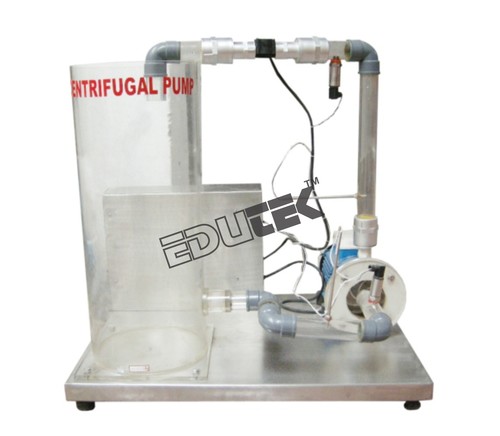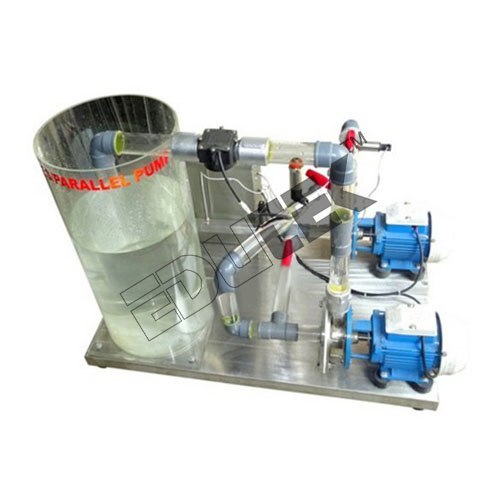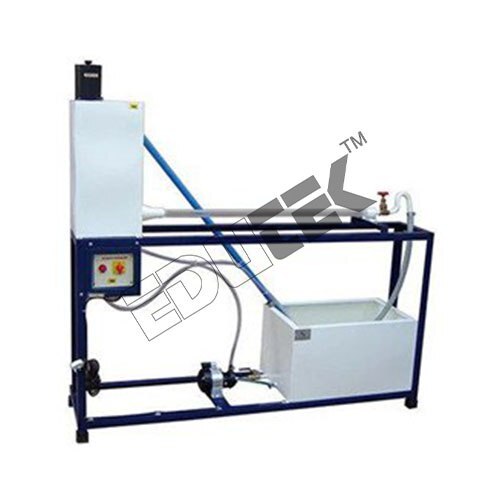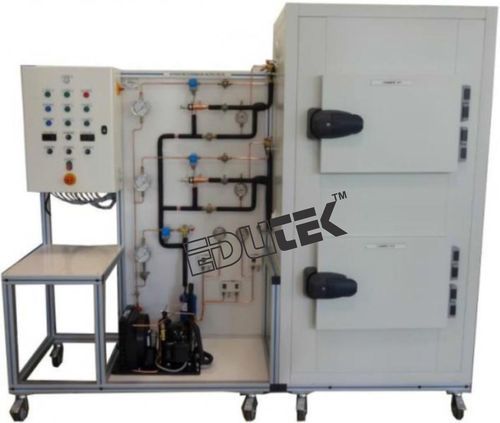Experiments With A Centrifugal Pump
Product Details:
X
Product Description
EXPERIMENTS WITH A CENTRIFUGAL PUMP
Centrifugal pumps are turbomachines which are used to transport fluids. The rotation of the pump impeller generates centrifugal forces. These forces are used to deliver the water.
The experimental unit provides the basic experiments to get to know the operating behaviour and the important characteristic variables of centrifugal pumps.
features a closed water circuit with water tank and a centrifugal pump with variable speed via frequency converter. The pump
housing is transparent. This enables to observe the pump impeller in operation and the occurrence of cavitation. Valves in the inlet and outlet of the pump allow the setting of different pressure conditions.
The experimental unit is fitted with sensors for pressure, temperature and flow rate. The microprocessor-based measuring technique is well protected in the housing. All the advantages of software-supported experiments and software and the microprocessor. The connection to a PC is made by USB.
The well-structured instructional material sets out the fundamentals and provides a step-by-step guide through the experiments.
Learning Objectives / Experiments
- Principle of operation of a centrifugal pump
- Recording of pump characteristics
- Effect of speed on head
- Effect of speed on flow rate
- Determination of pump efficiency
- Cavitation effects
- Effect of incorrect direction of rotation
Specification
- Functioning and operating behaviour of a centrifugal pump
- Closed water circuit contains centrifugal pump with drive motor and a transparent water tank
- Transparent housing for observing the pump impeller
- Variable speed via frequency converter
- Adjustment of pressure conditions at inlet and outlet side of the pump by valves
- Sensors for pressure at inlet and outlet side of the pump, temperature and flow rate
- Microprocessor-based measuring technique
- Unit-specific software for data acquisition and operation via USB under Windows Vista or Windows 7
Technical Data
Centrifugal pump with drive motor
- Power consumption: 370W
- Speed: 0...3000min-1
- Max. flow rate: approx. 40L/min
- Max. head: approx. 10m
- Water tank: approx. 15L
Measuring ranges
- Pressure (inlet): -1...1bar
- Pressure (outlet): 0...5bar
- Flow rate: 3,5...50L/min
- Temperature: 0...130°C
Dimensions and Weight
- LxWxH: 680 x 610 x 780mm
- Weight: approx. 51kg
Tell us about your requirement

Price:
Quantity
Select Unit
- 50
- 100
- 200
- 250
- 500
- 1000+
Additional detail
+91
Email
Other Products in 'Fluid Mechanics Lab Equipment' category
"We deal all over World but our main domestic market is South India"
 |
EDUTEK INSTRUMENTATION
All Rights Reserved.(Terms of Use) Developed and Managed by Infocom Network Private Limited. |














